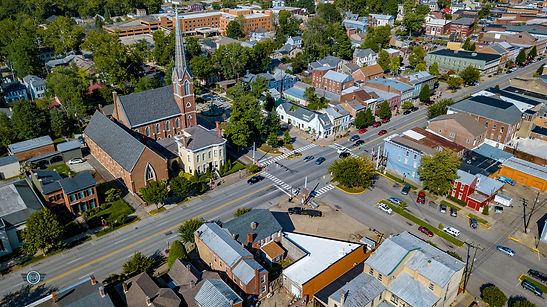
Madison History
Decades before most other cities engaged in historic preservation activities, Madison's residents demonstrated pride in their built heritage and fought to preserve the nineteenth century architecture. In fact, Madison was the first city in Indiana to enact laws to protect landmark buildings with the first zoning laws enacted in 1954 and the first preservation laws enacted in 1961. This local action was quickly backed by the state through the efforts of State Representative and Madison attorney Joseph Hensley and Indiana's first preservation laws were passed statewide. Without such early intervention, Madison's historic buildings that display some of the best craftsmanship of the era may have been lost forever.
Architecture, History, & Culture

Founded in 1809, Madison, Indiana sits along the banks of the Ohio River. Early steamboat transportation and shipping helped the city rapidly grow into one of the largest cities in the state by the early nineteenth century. Also heavily influenced by the close proximity of the river, Madison's location as one of the southernmost cities in the free state of Indiana made it a hotbed of Underground Railroad activity. The area of the city formerly known as Georgetown still boasts many of the historic African American landmarks.
Women also found opportunity in Madison. Throughout the city's history, there have been many examples of female shop owners, property owners, and workers. In fact, the majority of the workers at the historic Eagle Cotton Mill's weaving rooms were women. Other women took prominent roles in civic organizations and benevolent societies. It was a group of women associated with the local United Methodist Church that were credited with finding, securing, and donating the city's first incorporation documents that were discovered in items donated to a charity rummage sale. (Before the discovery of those documents, citizens were not certain about the date of the city's original foundational plat.) Even today, people from all walks of life, genders, lifestyles, and political affiliations work together to preserve Madison's rich cultural heritage.
Madison's National Historic Landmark District, one of the largest in the nation, features exquisitely preserved examples of nineteenth and early twentieth century architectural styles. Some of the most popular styles are Italianate, Federal, and Greek Revival, but many more styles can be seen around town. For more information about Madison's history and the National Historic Landmark District, please the National Park Service's Madison website.
